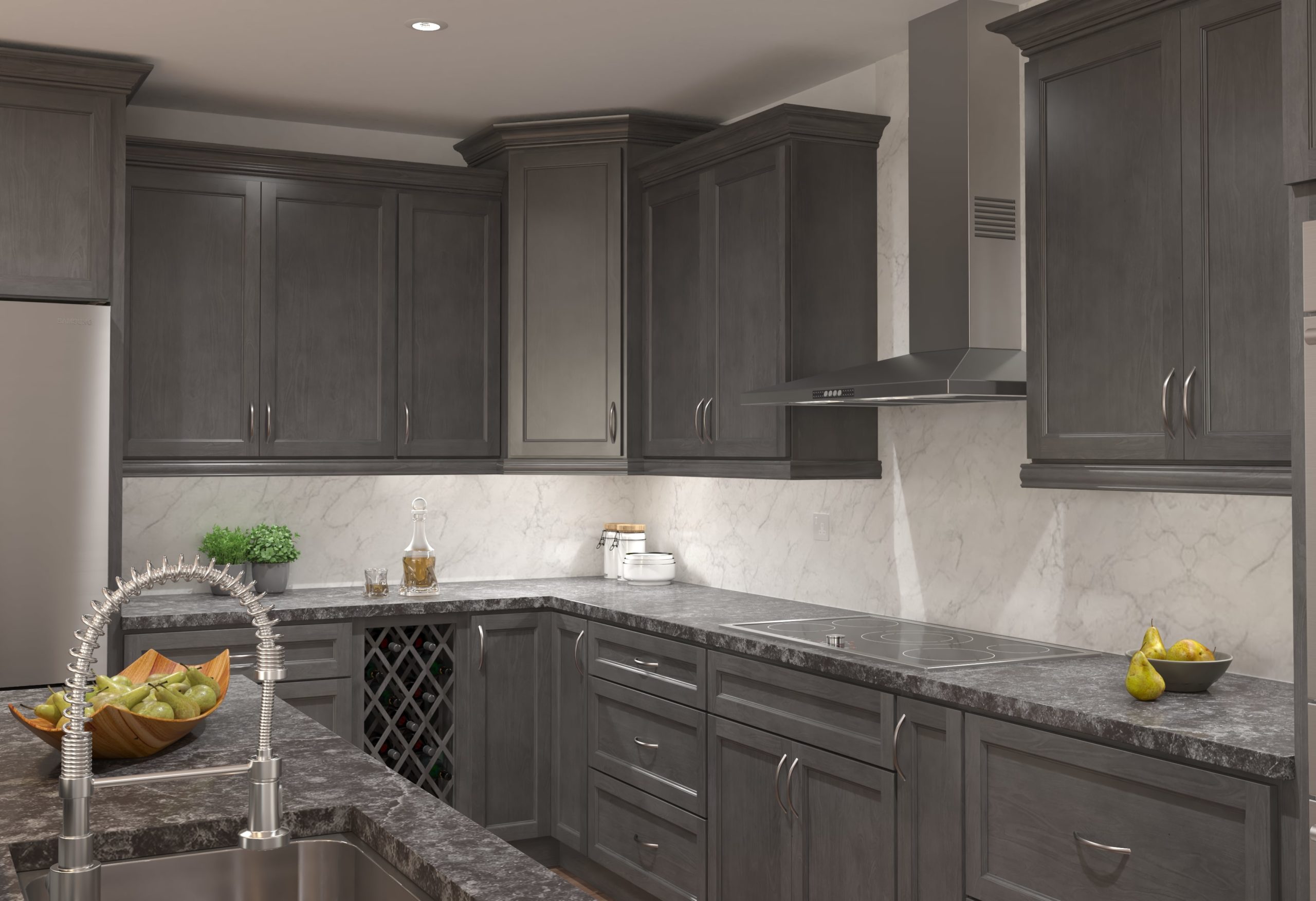Material Considerations: Gray Floors With Oak Cabinets

The harmonious marriage of gray floors and oak cabinets hinges on careful consideration of materials and finishes. The interplay of textures, colors, and durability will significantly impact the overall aesthetic and longevity of your space. Choosing wisely ensures a design that’s both visually appealing and practically sound.
Gray Flooring Materials: A Comparative Analysis
Three prominent contenders for gray flooring, each offering a unique blend of aesthetics and practicality, are porcelain tile, hardwood, and polished concrete. Porcelain tile boasts exceptional durability and low maintenance, resisting scratches and stains with relative ease. Its versatility allows for a wide range of gray shades and patterns, from subtle variations to dramatic veining. Hardwood, while offering a warmer, more natural feel, requires more diligent maintenance, necessitating regular cleaning and potential refinishing over time. The gray tones in hardwood flooring can be achieved through staining or naturally occurring variations in wood grain. Polished concrete, a contemporary choice, provides a sleek, industrial aesthetic. Extremely durable and easy to clean, it can be stained or treated to achieve various shades of gray. However, its coolness might require underfloor heating for enhanced comfort.
Oak Cabinet Finishes and Their Interaction with Gray Floors
Oak cabinets offer a wealth of finishing options, each influencing the overall ambiance. A stained oak finish, ranging from light honey tones to deep, rich browns, introduces warmth and contrast to a gray floor. Lighter gray floors pair beautifully with medium-stained oak, creating a balanced and inviting atmosphere. Conversely, darker gray floors complement darker stained oak, generating a sophisticated, almost moody feel. A painted oak finish, often white or a soft gray, offers a more contemporary and streamlined aesthetic. Pairing painted oak with a gray floor requires careful consideration of shade selection. Similar shades create a cohesive, monochromatic scheme, while contrasting shades, such as a light gray floor with a dark gray painted oak, offer a striking visual juxtaposition. Finally, a natural oak finish, showcasing the wood’s natural grain and color, provides a rustic charm. It works best with cooler gray tones, avoiding overly dark shades that could overwhelm the wood’s natural beauty. A light gray floor with a natural oak finish can create a serene and airy space.
Challenges and Solutions in Combining Gray Floors and Oak Cabinets, Gray floors with oak cabinets
The combination of gray floors and oak cabinets, while aesthetically pleasing, can present certain challenges. Careful planning mitigates potential issues and ensures a cohesive and harmonious outcome.
- Challenge: Achieving a Balanced Color Palette: Overly dark gray floors paired with dark stained oak can create a visually heavy and oppressive atmosphere. Solution: Introduce lighter elements, such as white walls or lighter-colored countertops, to brighten the space and create visual balance.
- Challenge: Creating Visual Interest: A monotonous color scheme, using only shades of gray and brown, can appear dull. Solution: Incorporate pops of color through textiles, artwork, or accessories to add visual dynamism and personality.
- Challenge: Maintaining Consistency in Style: Mixing contemporary gray floors with overly traditional oak cabinets can create a stylistic clash. Solution: Choose cabinet hardware and other details that complement both the flooring and the cabinets, creating a cohesive design language. For example, modern, minimalist hardware would suit contemporary gray floors and cabinets, while more ornate hardware could work with a more traditional style.
